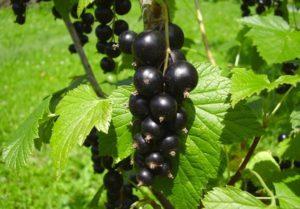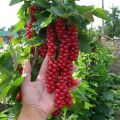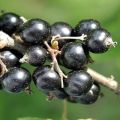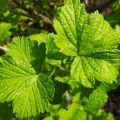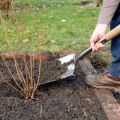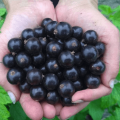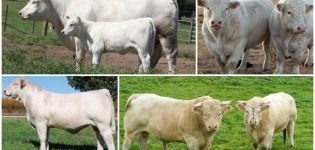The best and new varieties of black currant for the Urals, their descriptions and characteristics
Despite the relatively young age of 500 years, currants have long won a leading position in cultivation. Under the conditions of the Ural temperature drops, it can be quite problematic to achieve a high yield of a plant. Therefore, it is worth familiarizing yourself with the best varieties of black currant, which are adapted to the temperature conditions of the Urals.
Features of the region
The Urals are characterized by severe climatic conditions. Average temperatures in winter can reach from -20 to -40 degrees Celsius. In summer, the air can warm up to +35 degrees. In addition, winter temperature drops are often accompanied by strong winds. Therefore, the choice of currant seedlings should be based on its frost resistance.
It is also important to select cultivated varieties with different flowering times. Late spring and frequent frosts can damage the color and ovary of the currant, which, in turn, will affect the yield.
Black currant varieties
Thanks to the efforts of breeders, a significant number of new varieties of black currant have been developed, which are adapted to the climate of the Urals.
Rainbow
Aging: medium late. Features of the bush: tall, erect, compact. Fruits: large, black, with a slight sheen. Weight: up to 3 grams. Productivity: more than 3 kilograms. Tendency to defeat: not susceptible to fungal infection.
Ripening of berries occurs simultaneously, they do not crumble even when overripe. Stores well and can withstand transportation.

Oriana
Aging: early. Features of the bush: tall, with strong shoots. Fruits: large, sweet and sour taste. Weight: 1.5-2.5 grams. Tendency to defeat: resistant to many diseases. The shoots remain upright even when loaded with crops.

Gross
Aging: medium late. Features of the bush: strongly branched, with dense convex leaves. Fruits: deep black color, with a slight shine and delicate skin. Weight: up to 7 grams. Productivity: about 4 kilograms. Tendency to defeat: protected from infection.
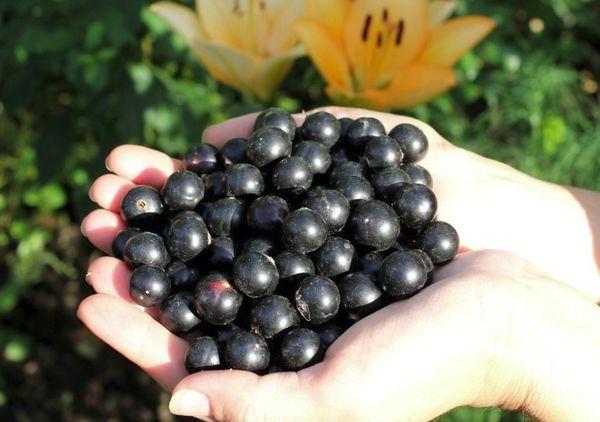
Exotic
Aging: early. Features of the bush: sluggish. Fruits: similar to large cherries. Weight: 5-6 grams. Productivity: 3.5 kg. Tendency to defeat: unable to resist the fungus, resistant to kidney mites.
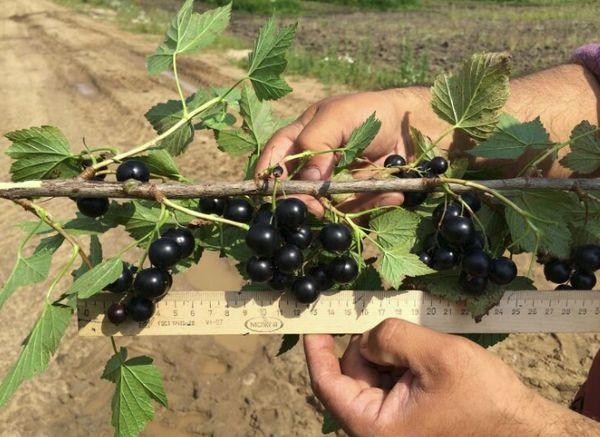
Gulliver
Aging: early.Features of the bush: vigorous, weakly branched, with strong shoots and dense foliage. Fruits: large, from 9 to 17 berries are formed on the cluster, which have a slight sourness. Weight: up to 3 grams. Productivity: about 3 kilograms. Tendency to defeat: resistant to powdery mildew, rust and kidney mites.
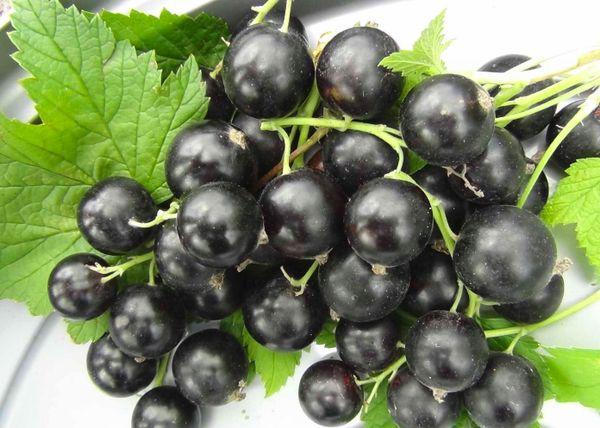
Treasure
Aging: average. Features of the bush: small size. Fruits: large. Weight: 5 grams. Tendency to defeat: moderately susceptible to kidney mites and powdery mildew. Under the load of fruits, the shoots tilt to the very ground, so the bush needs support.
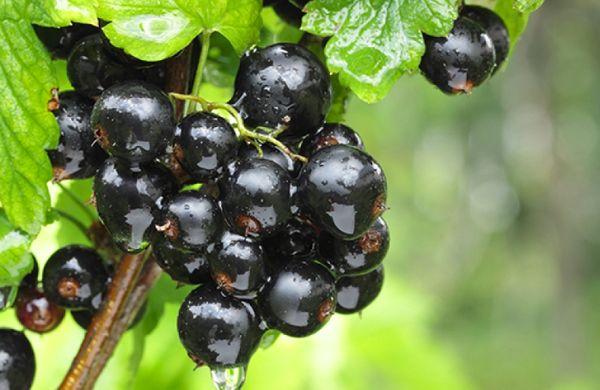
Vigorous
Aging: late. Features of the bush: branched, slightly growing. Fruits: plum, with a sour refreshing taste. Weight: 6-7 grams, diameter - about 3 centimeters. Productivity: up to 12 tons of fruits from 1 hectare of plantations. Tendency to defeat: resistant to many types of diseases.
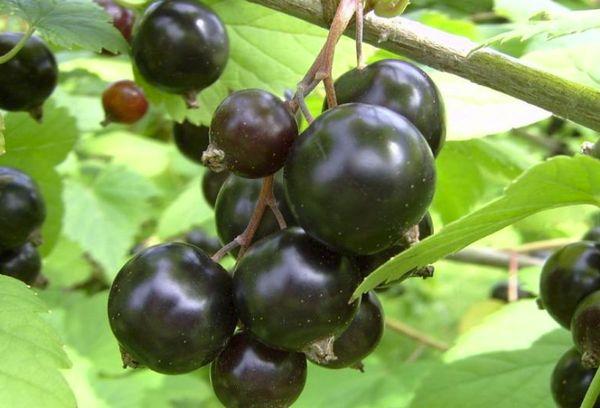
Lazy person
Ripening: late, ripe berries appear in early August. Features of the bush: tall, branched, with thick leaves. Fruits: large, with a pronounced taste and aroma, black-brown color Weight: 2.5-3.1 grams. Productivity: about 4 kilograms. Tendency to defeat: unable to resist powdery mildew.
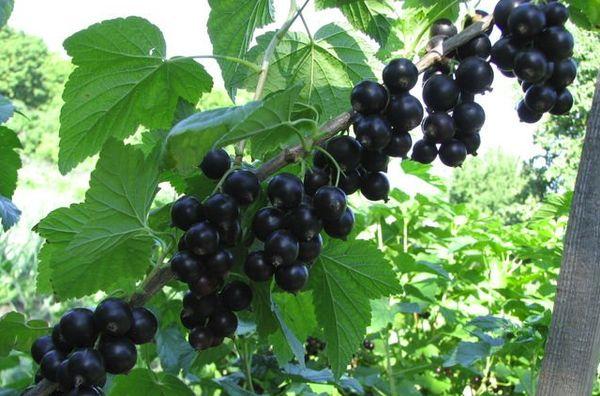
Sevchanka
Aging: early. Features of the bush: medium-sized, compact. Fruits: large, with dense skin, do not crumble when overripe, well stored after harvest. Weight: 3 grams. Productivity: 3.5 kg. Tendency to defeat: protected from rust, powdery mildew and pests.
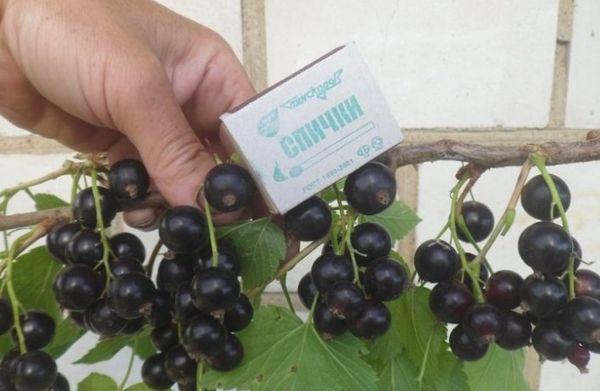
Nara
Aging: early. Features of the bush: slightly branched, tall, with slightly curved shoots. Has wrinkled convex leaves. Fruits: round, sweet and sour, with greenish pulp. Weight: 1.5 to 3.5 grams. Productivity: 10-14 kilograms. Tendency to defeat: has strong immunity. The variety can withstand temperature drops up to 35 degrees.
Red currant for the Urals
Red currant varieties are also adapted to the harsh climatic conditions of the Urals and Siberia. Various species of this plant are cultivated on this territory, both local origin and imported from other regions.
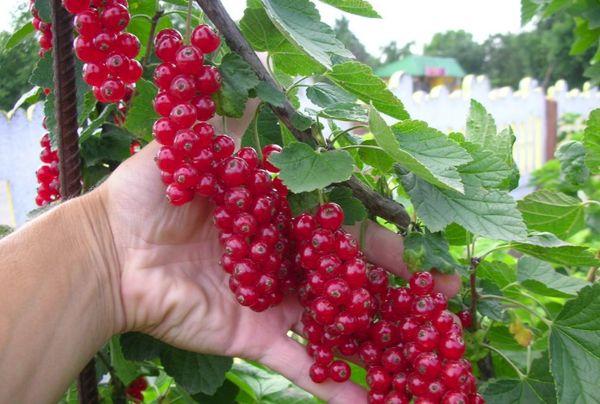
Ural pink
Aging: average. Features of the shrub: tall, but compact. Fruits: large, pink in color and have a delicate dessert taste and pronounced aroma. Weight: 1.1-1.2 grams. Productivity: 10 kilograms. Tendency to defeat: resists fungal diseases, but susceptible to aphids.
Ural beauty
Aging: early. Features of the bush: low, branched. Fruits: formed on long clusters, have a delicate sweetish taste. Weight: not less than 1.5 grams. Productivity: up to 15 kilograms. Propensity to diseases and pests: has strong immunity.
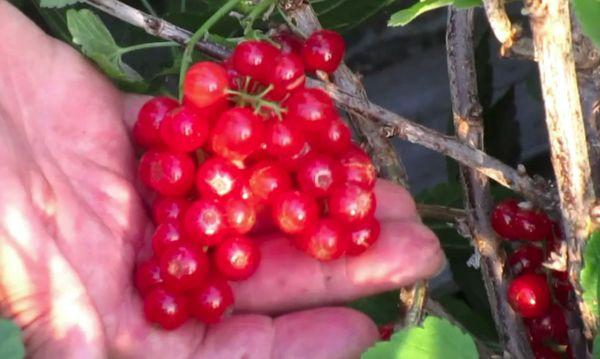
Ural gem
Aging: average. Weight: 07-0.8 grams. Productivity: Depends on weather conditions. Tendency to defeat: has strong immunity.
Beloved
Aging: average. Features of the bush: small size, strong erect shoots. Fruits: have a sweet and sour pleasant taste. Weight: 0.6-0.8 grams. Productivity: 3-4 kilograms. Tendency to defeat: prone to leaf spot.
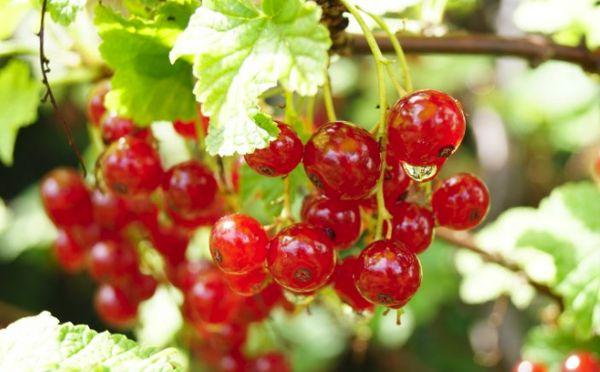
Dawn
Aging: average. Features of the bush: medium-sized, slightly branched. Fruits: round, red, with a thin skin. Weight: 1 gram. Productivity: average. Tendency to defeat: has strong immunity.
Jonker van Tets
Aging: average. Features of the bush: high, with spreading branches. Fruits: bright red in color, sweetish taste. Weight: up to 0.7 grams. Productivity: up to 6 kilograms. Tendency to defeat: resistant to attacks of powdery mildew.
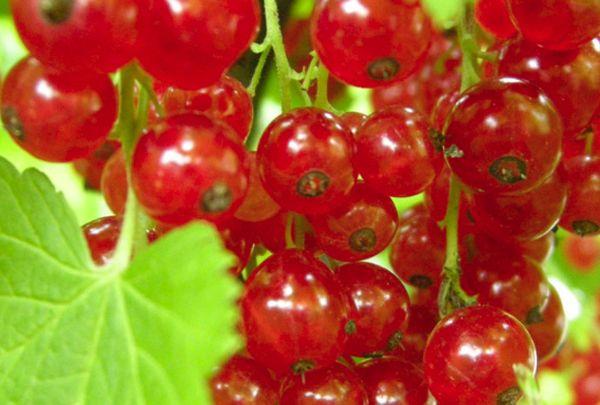
Dutch pink
Aging: medium late. Features of the bush: height about 1.5 meters, not branched. Fruits: round, pale pink in color. Weight: 0.9 to 1.1 grams.Productivity: from 4.5 to 9 kilograms of berries. Yields are highly dependent on care and weather conditions.
During heat treatment, the berries lose their color, so it is better to use them fresh.
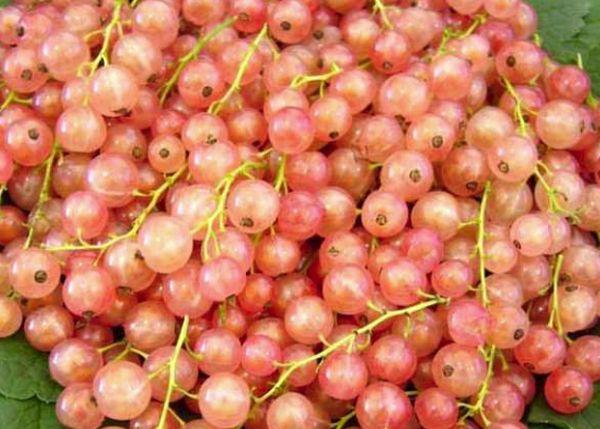
The best varieties of white currant
This variety of currant is not inferior in usefulness to its black and red counterparts.
Versailles
Aging: late July. Features of the bush: branched, requires a garter. Fruit: sweet in taste. Weight: up to 0.8 grams. Productivity: up to 3 kilograms. Injury Propensity: Genetic immunity to powdery mildew and kidney mites.
White fairy
Aging: early. Features of the bush: medium size and compact. Fruits: no pronounced aroma, sweet and sour. Weight: 0.6-0.8 grams. Productivity: up to 6 kilograms. The variety is also called Almaznaya.
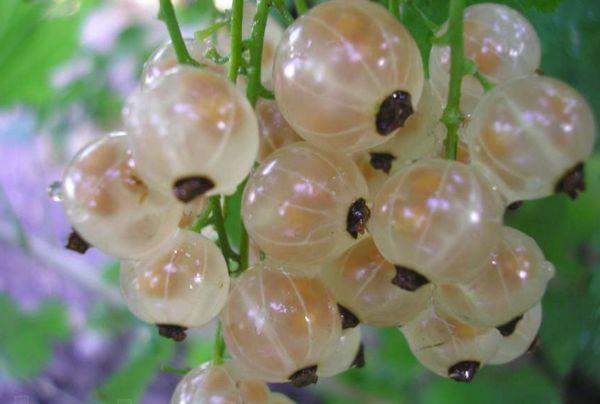
Dutch white
Aging: medium early. Fruits: creamy, slightly flattened and medium in size. Weight: about 0.7 grams. Productivity: up to 4 kilograms. Tendency to defeat: has strong immunity. Easily propagated by cuttings.
Ural white
Aging: mid-summer. Features of the bush: low, dense, medium-branched. Fruits: diamond-transparent, sweet taste prevails. Weight: 0.5 to 1 gram. Productivity: 5-6 kilograms. Tendency to defeat: strong immunity to disease.
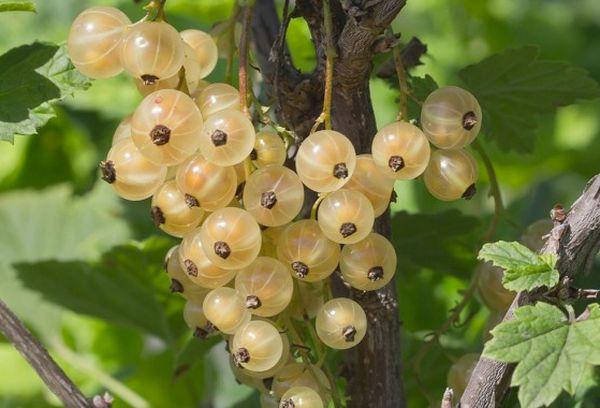
The specifics of planting currants in the Urals
Correct planting of seedlings guarantees 50% success in growing currants and getting a good harvest. When planting a plant, important rules should be taken into account and followed:
- Planting in the ground is best done in the spring. So the currants will have time to get stronger and prepare for the winter. Spring planting in the Urals is most often carried out in May, when the soil warms up 20 centimeters in depth.
- The soil must be prepared 20 days before planting. It is necessary to clear the ground of foliage and grass, and also apply top dressing. To fertilize the soil, you will need to add superphosphate to rock salt and lime (1: 1). Its amount should be no more than ½ of the amount of salt. 1 bucket of this composition is enough to fertilize 1 square meter of soil.
- Before planting, the roots of the seedling must be soaked in water. The day before transferring the plant to the ground, the seedlings must be placed in warm water.
- During planting, you can only water the plant with warm water.
- When planting, take into account the place and proximity of other plants. Best of all, currants will feel near a fence or in the shade of a tree. When choosing neighbors for a shrub, you should give preference to perennial flowers, carrots, potatoes or greens. The care features of these crops are identical. But the neighborhood with cabbage should be excluded, since it is hygrophilous. Excess moisture can lead to rotting of the root system and the death of currants.
It should also be borne in mind that it is impossible to plant different varieties of currants nearby. When pollinated, they can lose their original qualities, which will lead to a decrease in yield.

Further care of the Ural currant
Caring for a young currant bush involves watering, loosening and mulching. In the Urals, these procedures have their own characteristics:
- watering is carried out once a week, the root system should receive at least 3 liters of warm, settled water;
- from the first warm days, mulch is laid out around the bush - hay, overflowing manure or compost, which helps to retain moisture in the soil;
- loosening is carried out the next day after watering, its depth should be 15-20 centimeters.
Loosening should not be neglected, since light soil provides the required amount of oxygen to the root system.
In caring for currants in the Urals, it is important to take into account the climatic features of this region. Since spring comes late here, it is better to postpone plant transplantation to autumn time.Spraying the plant to prevent infection should be attributed to the list of spring affairs, and pruning remains mandatory.
From the second year after planting, plant feeding should also be referred to the number of spring work. After wintering, the currant bush becomes weakened, and the application of fertilizers helps to restore strength and increase yields.
The productivity of currants depends on a properly selected variety, compliance with planting rules and systematic care. In the harsh climate of the Urals, the choice of varieties should be approached with special attention. Plants specially grown for this region delight with high yields and resistance to temperature changes.

